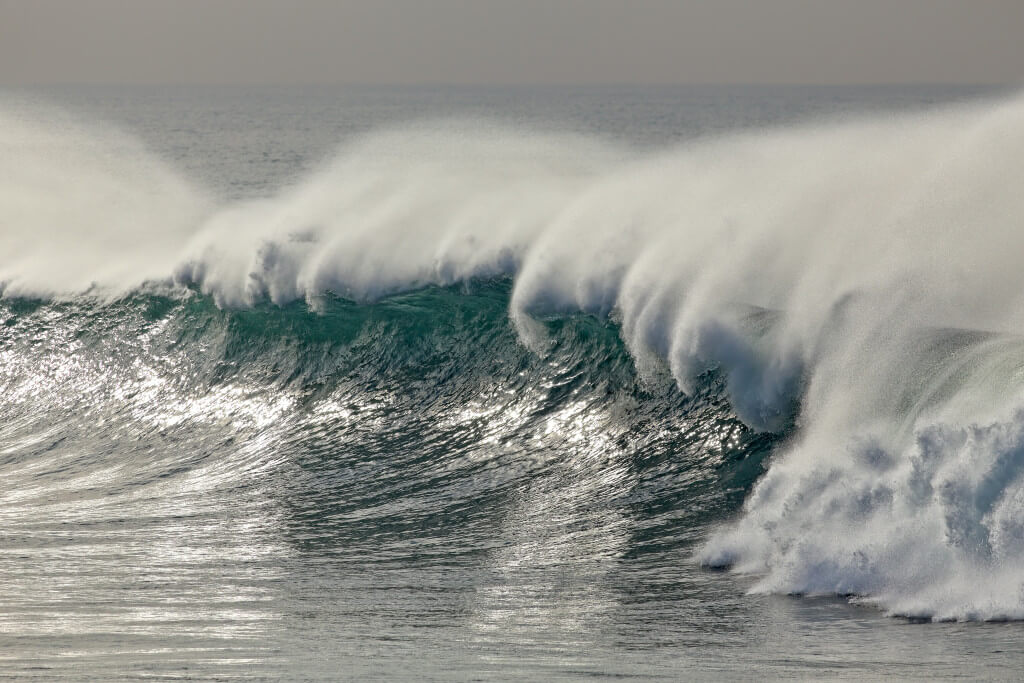Fundy Bay is famous for pictures of fishing boats tilted on their hulls — run aground by the immense power of the world’s largest tides.
The waters of this scenic coastal inlet along Canada’s Nova Scotia and New Brunswick provinces rise and fall by more than 50 feet twice a day, every day of the year. That predictability is one of the key reasons why green-energy researchers are fascinated with the potential of converting tidal movements into electricity. Solar power goes dark after sunset and wind power rises and falls with moving weather patterns. But tides rise and fall like clockwork, creating the potential for an extremely reliable stream of electric power.
The Trouble with Tidal Energy
Unfortunately, the ocean is one of the worst places on earth to install mechanical equipment. Saltwater is extremely corrosive, and working on machinery underwater is incredibly dangerous and expensive.
Some wave and tidal energy projects are mounting turbines on the sea floor. This keeps the turbines out of sight, which is a boon to coastal views, but it also dramatically increases the costs of upkeep precisely because they are so difficult to access.
Floating Platforms: A Tidal Energy Alternative
Fundy Bay’s epic tides have made it a hub for working out these kinds of challenges in wave and tidal energy research. One alternative researches are exploring is mounting a turbine beneath a floating platform that’s moored to the ocean floor via cables. A turbine connected to a floating platform could have all of its machinery easily accessible from the platform rather than mounted on the sea floor, where the only way to reach it is with scuba divers or remote-operated vehicles (or both).
In March 2016, a Canadian firm called Dynamic Systems Analysis (DSA) helped launch a floating research platform called EcoSPRAY that will document how highly turbulent tides work. This, in turn, will provide clues to the best ways to deploy floating tidal energy platforms that have been moored to the ocean floor.
The platform is operating in the Grand Passage between Freeport and Westport, Nova Scotia, in the Outer Bay of Fundy. Sensors on the EcoSPRAY will track wind speeds, tidal currents and wave actions. A drag plate mounted on the bottom of the platform will simulate the thrust of an underwater turbine, DSA says.
Protecting tidal ecosystems
While floating tidal power platforms would be less visually pleasing than turbines mounted on the sea floor, they have the potential to be less disruptive to underwater environments. Mounting an underwater turbine is a major construction project, whereas placing anchor points on the sea floor for mooring cables could be far less disruptive to the coastal environment.
Protecting that environment is very much on the minds of Fundy Bay researchers. Fundy Ocean Research Center for Energy (FORCE), the Offshore Energy Research Association (OERA) and the Nova Scotia Department of Energy are all working together on a half-million-dollar program to determine the effects of tidal energy turbines this year.
This points to the future of wave and tidal energy, which may well depend on finding the best mix of high energy output, low cost and minimal impact on the subsea environment.
Related articles:
• EcoSPRAY tidal platform inspects moorings in high-tidal flows
• Fundy tidal energy study to look at seabirds, lobster, acoustic environment




